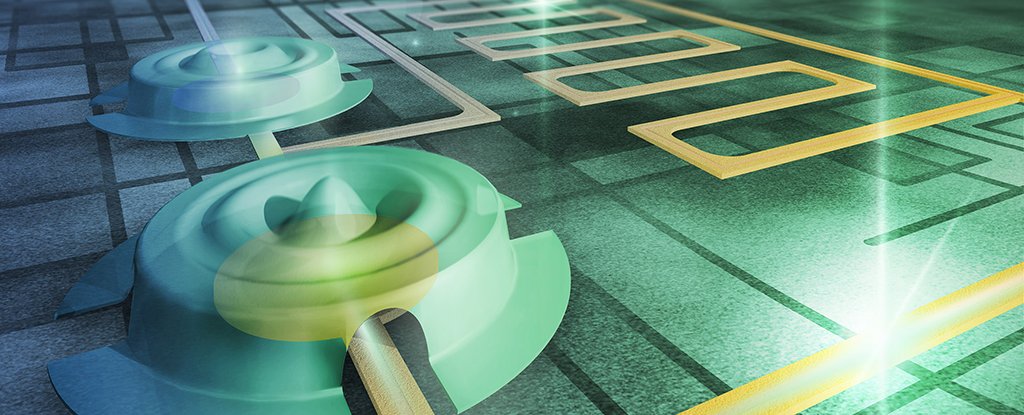For the first time,
scientists have managed to show quantum entanglement – which Einstein famously
described as "spooky action at a distance" – happening between
macroscopic objects, a major step forward in our understanding of quantum
physics. Quantum entanglement links particles in a way that they instantly
affect each other, even over vast distances.
On the surface, this
powerful bond defies classical physics and, generally, our understanding of
reality, which is why Einstein found it so spooky. But the phenomenon has since
become a cornerstone of modern technology.
Still, up until now quantum
entanglement has only been demonstrated to work at the smallest of scales, in
systems based on light and atoms, for example. Any attempt to increase the
sizes has caused problems with stability, with the slightest of environmental
disturbances breaking the connection.
But new research changes all
of this, by demonstrating that this 'spooky action' can indeed be a reality
between massive objects. We're not talking massive in the black hole sense but
in the macroscopic sense – two 15-micrometre-wide vibrating drum heads. And the
next step will be to test whether those vibrations are being teleported between
the two objects.
"Our work qualitatively
extends the range of entangled physical systems and has implications for
quantum information processing, precision measurements, and tests of the limits
of quantum mechanics," write the researchers.
Building on the research
stretching back to 2014, the very new experiments used two vibrating drumheads to
represent massive objects, or massive mechanical oscillators to use the
technical term. Each one was 15-micrometres in diameter, about the width of a
human hair. Not massive to us, but massive compared to the atomic scales
previously used to demonstrate quantum entanglement – each drumhead was
composed of trillions of atoms.
To achieve their results,
the team cooled a superconducting electrical circuit to just above absolute
zero, about -273 degrees Celsius (-459.4 degrees Fahrenheit). This was then
controlled and measured using weak microwave fields.
Through the application of
microwaves, the drumheads on the circuit were able to vibrate at a high
ultrasound frequency, producing the vibrations that formed the peculiar quantum
state that had Einstein scratching his head about in the 1930s.
"It is, of course,
immensely satisfying to see the vision that you have laid out come to fruition,
and exciting to imagine where experiments like this might ultimately lead, and
what fundamental insights and technological development they might ultimately
yield," says one of the team, Matt Woolley from the University of New
South Wales in Australia.
The extremely low
temperatures and the circuit's electrical fields removed all forms of
disturbance and interference from the drumheads, leaving only the quantum
mechanical vibrations behind. Another impressive feat was keeping the entangled
state for almost half an hour – previous experiments have struggled to reach
fractions of a second.
Now that this breakthrough
has been made at a scale approaching what we can see with the naked eye, it has
the potential to lead to all kinds of new discoveries in the field: from how
gravity and quantum mechanics work together, to the possibility of teleporting
mechanical vibrations across entangled objects.
"The next step is to
demonstrate teleportation of the mechanical vibrations," says Woolley.
"In teleportation, the physical properties of an object can be transmitted
using the channel of `spooky action'."
Einstein himself described
it as like two halves of the same coin, split up: if you have heads, the other
half must be tails, even if it's millions of light-years away. "In quantum
teleportation, properties of physical bodies can be transmitted across
arbitrary distances using the channel of 'spooky action at a distance',"
says one of the team, Caspar Ockeloen-Korppi from Aalto University in Finland.
"We are still pretty
far from Star Trek, though." While it's hard to say where this work will
lead us next, it can't be understated how important it is that we've taken this
first step into macroscopic quantum mechanics.
"It is clear that the
era of massive quantum machines has arrived," Woolley explains in a piece
for The Conversation. "And is here to stay." The research has been
published in Nature.
Source



:max_bytes(150000):strip_icc()/GettyImages-623682717-596300c55f9b583f180dd5d0.jpg)


